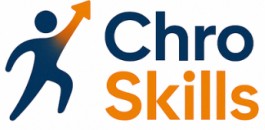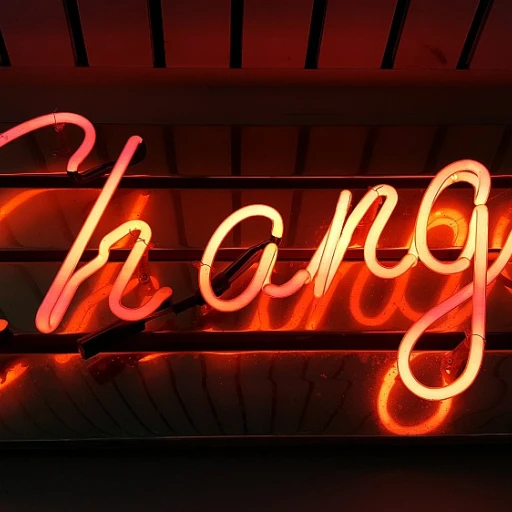
Understanding the Role of a Chief Human Resources Officer
The Role and Responsibilities of a Top HR Leader
In today's organizational landscape, the role of a Chief Human Resources Officer (CHRO) is more crucial than ever. A CHRO acts as a strategic partner in the company, directly influencing team performance by overseeing various aspects of human capital management. This leadership position isn't just about managing HR tasks; it's about enhancing team dynamics and ensuring every employee contributes to the organization's success. A CHRO is integral to setting the vision for leadership development and establishing a culture that prioritizes continuous learning and growth. By aligning training programs with the company's strategic goals, the CHRO helps teams improve and adapt in a competitive environment. Here’s a closer look at the key responsibilities and skills that define effective leadership in this role:- Leadership and Vision: One of the main functions of the CHRO is to provide leadership that inspires and motivates team members. This involves cultivating a shared vision and aligning employees' goals with company objectives.
- Strategic Decision Making: Effective decision making is at the heart of outstanding team performance. The CHRO must leverage strategic thinking to align team goals with the broader organizational objectives, ensuring effective coaching and management of resources.
- Performance Management: Measuring and improving employee performance is critical. The CHRO oversees the implementation of performance coaching and feedback mechanisms, helping employees identify and utilize their strengths to foster a high-performance culture.
- Conflict Resolution: Navigating challenges is part and parcel of team dynamics. An adept CHRO employs problem-solving strategies to resolve conflicts, encouraging open communication and reducing potential disruptions in team performance.
- Emotional Intelligence: As discussed in subsequent sections, emotional intelligence is an invaluable asset for any HR leader. The ability to understand and respond to team members’ emotions can significantly impact employee morale and engagement.
Communication Skills: The Foundation of Effective Coaching
The Importance of Clear and Effective Communication
Communication stands as a vital skill for any chief human resources officer aiming to elevate team performance. Effective coaching hinges on the ability to convey ideas clearly and foster understanding among team members. When a coach articulates the goals, expectations, and strategies efficiently, it paves the path for improved performance across the board.
An HR leader must be adept in both verbal and non-verbal communication to truly connect with employees. This connection serves as the foundation for any successful coaching strategy. It enables coaches to provide precise feedback, tailored to a team member’s strengths and development needs. Effective communication bridges the gap between managers and teams, facilitating a constructive dialogue where employees feel valued and heard.
Moreover, within the realm of team management, communication skills play a critical role in fostering a positive team environment. Clear communication helps in setting goals that resonate with team members, ensuring everyone is aligned with the organizational objectives. It also assists in resolving conflicts, guiding teams through challenges with a cooperative spirit.
In an ever-evolving work landscape, continuous learning is paramount. For HR professionals, staying updated with communication techniques can significantly enhance their effectiveness as leaders. Resources such as engaging questions to connect with team members prove invaluable in deepening interpersonal interactions, ultimately leading to better team performance.
Emotional Intelligence: A Critical Skill for HR Leaders
Fostering Emotional Intelligence for Boosted Team Performance
Emotional intelligence is undeniably one of the most vital skills a Chief Human Resources Officer (CHRO) can possess. It's the capacity to recognize, understand, and manage our emotions and the emotions of those around us. This skill is not only key to nurturing a harmonious workplace but also critical in effective coaching and leadership development. In the context of team performance, emotional intelligence equips coaches with the ability to provide constructive feedback to their team members. Feedback is instrumental in improving employee performance, as it helps individuals understand their strengths and areas for development. Ultimately, this supports the overall goals of performance management by ensuring alignment with organizational objectives. When CHROs employ emotional intelligence, they are better positioned to create a work environment where open communication thrives. It aids in conflict resolution, turning potential team challenges into opportunities for growth and problem solving. This is crucial for teams striving for continuous learning and improvement. Moreover, emotionally intelligent HR leaders can recognize when team members may need additional support or leadership training to achieve their full potential. By doing so, they foster an environment rich in team building and team coaching, which is essential for boosting team performance. Enhancing emotional intelligence within the coaching strategies not only benefits individual growth but also elevates the collective performance of the team. By nurturing emotional intelligence, HR leaders can drive meaningful engagement and sustainable development within their teams. For more on advancing your career in the HR sector, exploring available strategies and education can be the next step to take.Strategic Thinking: Aligning Team Goals with Organizational Objectives
Strategic Vision: The Art of Aligning Goals
In the multifaceted role of a Chief Human Resources Officer, strategic thinking is paramount. HR leaders must possess the ability to align team goals with broader organizational objectives to enhance overall performance. By fostering a culture that encourages team coaching and development, organizations can achieve significant improvement in performance metrics. Aligning team goals requires clear communication, an understanding of team dynamics, and the ability to integrate individual strengths into a cohesive plan. Understanding the intricacies of strategic decision making helps HR leaders guide their teams effectively. An executive needs to observe and assess team performance, identify challenges, and lay out a roadmap that offers direction and purpose. This involves setting clear goals, providing constructive employee feedback, and orchestrating leadership development initiatives.- Evaluate Team Dynamics: Regularly assess how team members interact and work together. Recognizing strengths and areas for improvement helps to tailor coaching sessions, boosting team performance.
- Goal Setting: Define clear, measurable goals that align with the company's mission. Team members need to be aware of their roles in achieving these objectives, fostering a collective sense of purpose.
- Feedback Mechanism: Implement a robust feedback system within the performance management framework. Regular, honest feedback serves not only to improve performance but also to help employees feel valued and understood.
- Leadership Training: Equip potential leaders with problem-solving and decision-making skills. Provide training that enhances their ability to coach and mentor others, creating a ripple effect of improvement.
Conflict Resolution: Navigating Team Challenges
Resolving Disputes for Enhanced Team Dynamics
To truly improve team performance, a chief human resources officer must exhibit exceptional conflict resolution skills. As employees come together with diverse perspectives, disagreements are inevitable. However, effective coaching can transform these challenges into opportunities for growth. By fostering an open environment where team members feel valued and heard, potential disruptions can be navigated smoothly.
The ability to identify the root causes of conflicts is crucial for coaches. This involves active listening and asking the right questions during coaching sessions. By harnessing these problem-solving skills, coaches can address issues at their core, helping teams to not only resolve but also prevent future conflicts. This proactive approach ensures that team goals remain aligned with organizational objectives.
Providing constructive feedback is another essential aspect of dispute resolution. Feedback should be timely, relevant, and aimed at improvement. By incorporating feedback loops into team coaching, performance management becomes a dynamic and continuous process rather than a static, one-time event.
Leadership development plays a significant role in conflict resolution as well. Training team leads in decision making and communication skills equips them to handle challenges effectively, ultimately contributing to a positive team dynamic. Leadership training sessions focused on these skills help improve employee performance, nurturing a culture of trust and collaboration within teams.
In conclusion, conflict resolution is a cornerstone for any HR leader aiming to enhance team performance. By creating an environment that prioritizes open communication and continuous learning, team coaches can effectively address conflicts, paving the way for sustained growth and development.
Continuous Learning and Development: Building a Culture of Growth
Crafting a Growth-Oriented Environment
In the evolving world of human resources, continuous learning and development stand as a cornerstone for enhancing team performance. As coaches, HR leaders play an essential role in fostering an environment where team members are encouraged to grow, acquire new skills, and enhance their strengths. This not only builds a culture of growth but also contributes significantly to achieving team goals.
To effectively nurture a development-focused culture, it's crucial to integrate ongoing learning opportunities into the team's routine. This can be achieved through leadership development programs that are tailored to address specific team needs and coaching strategies aimed at honing the skills of each team member.
Regular training sessions are indispensable, offering a structured way for employees to engage with new concepts and techniques. These sessions can include various formats such as workshops, seminars, or team coaching modules. Such initiatives not only improve employee performance but also empower team members to take charge of their personal and professional development.
Feedback loops are another vital component. By establishing a system where constructive feedback is a regular part of the team dynamics, you help members understand their strengths and areas for improvement. This aligns well with the concepts of emotional intelligence and conflict resolution, discussed earlier, and aids in creating a harmonious and high-performing team.
Moreover, a strong emphasis on problem-solving and decision-making can greatly enhance team capabilities. Enabling team members to tackle challenges through collaborative efforts further elevates the performance of the team.
In summary, by creating a supportive atmosphere that promotes learning and growth, coaches improve their teams significantly. This not only lifts current performance levels but lays the groundwork for sustained success and leadership excellence in the long run.













